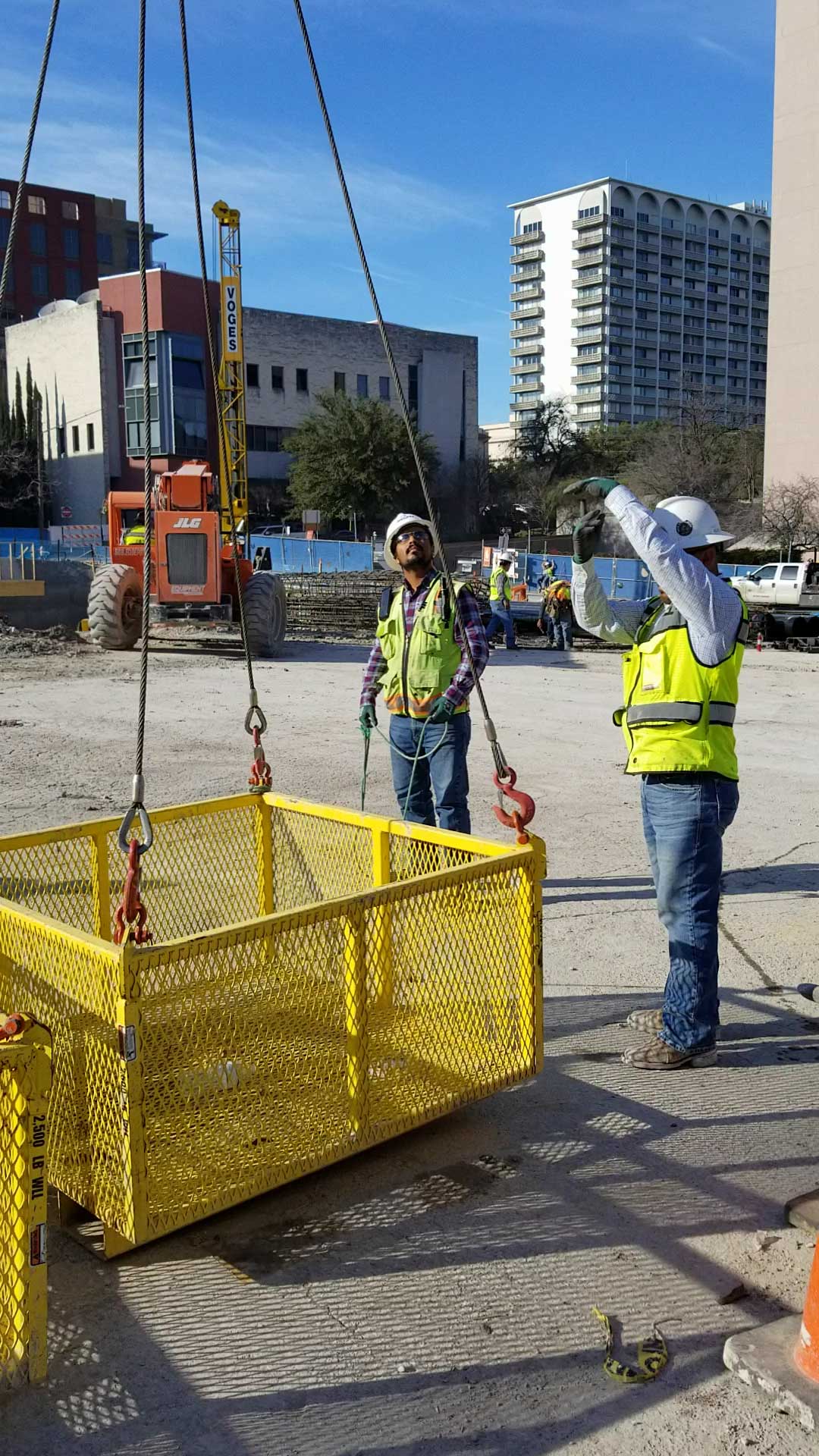Rigging Training and Signal Person Safety Training
At National Safety Partners, we provide essential training for individuals involved in rigging and signaling on the job. Our qualified rigging and signal person safety training covers industry-standard practices, ensuring that each participant understands proper rigging techniques, hitch types, sling angle calculations, and the fall zone. Additionally, participants learn how to perform thorough inspections of all rigging equipment, recognize potential hazards, and determine when to utilize different hitches.
By the end of the course, each student must pass both a written exam and a practical exam that demonstrates their rigging and signaling ability. This comprehensive approach ensures that participants are fully equipped to handle the demands of their roles safely and effectively.
Compliance with Industry Standards
Our training meets the guidelines for the following standards:
- State and Federal OSHA requirements
- 29 CFR 1910.184 and 1926.1404
- 29 CFR 1926.1419(B)(8)
- ASME B30.5 requirements
These standards ensure that our training programs align with the highest safety and operational practices in the industry.
Importance of Rigging Training and Certification
Rigger certification is crucial for professionals who handle and move loads in various industries. Proper certification ensures that riggers have the necessary skills to work safely, meeting the expectations of employers and regulatory bodies. Certified riggers help reduce workplace accidents and injuries, contributing to a safer and more efficient working environment.
Types of Rigger Certification
There are two primary levels of rigger certification:
- Rigger Level 1 (Basic): Covers fundamental rigging practices and safety, suitable for those involved in basic rigging operations.
- Rigger Level 2 (Advanced): Offers more comprehensive training on complex rigging techniques, ideal for those handling more challenging rigging tasks.
Rigging Training Content
Our rigging training programs cover a wide range of essential topics, including:
- Safe rigging practices
- Lifting operations and load dynamics
- Lift planning
- Inspection of rigging equipment
- Proper use of rigging hardware
- Common hitches and knots
- Applicable OSHA and ASME standards
This training ensures that participants are well-versed in both the theoretical and practical aspects of rigging, preparing them for the demands of the job.
Certification Process
To become a certified rigger, candidates typically need to:
- Complete a training course (available both online and in-person)
- Pass a written exam
- Pass a practical exam demonstrating rigging skills
- Obtain certification that is valid for 2-5 years, depending on the program
Certification not only validates the rigger’s expertise but also enhances their career opportunities by meeting the rigorous standards required in the industry.
Industry Standards and Prerequisites
Our rigger training and certification programs aim to meet or exceed:
- OSHA 29 CFR part 1926 requirements
- ASME B30 consensus safety standards
- U.S. Department of Labor standards for rigger apprenticeships
To enroll in rigger training programs, candidates generally must:
- Be at least 18 years old
- Have a high school diploma or GED
- Meet any additional prerequisites depending on the level of certification
Recertification Requirements
Rigger certification is typically valid for five years. Recertification requires riggers to complete all necessary requirements during the 12 months prior to their certification’s expiration date. To recertify, riggers must:
- Pass the applicable written examination
- Comply with NCCCO’s Substance Abuse Policy
- Adhere to the Code of Ethics
For Rigger Level II certificants, passing the Rigger Level II written exam maintains both Rigger Level I and Rigger Level II certifications. Recertification demonstrates ongoing competence and adherence to industry standards.
Online vs. In-Person Rigging Training
Advantages of Online Rigging Courses
Online rigging training offers several benefits, including:
- Convenience: Courses can be taken anytime, anywhere with internet access.
- Cost-effectiveness: Generally less expensive than on-site training.
- Self-paced learning: Participants can work through material at their own speed.
- Consistent content: All students receive standardized information.
Limitations of Online Rigging Courses
However, online training also has some limitations:
- Lack of hands-on practice: Online courses do not provide physical experience with rigging equipment.
- No direct instructor interaction: Students cannot ask questions or get immediate feedback.
- Incomplete certification: Online courses alone cannot fully certify riggers, as in-person practical evaluations are required.
Appropriate Uses for Online Courses
Online rigging training is useful for:
- Qualifying employees: As part of an employer qualification program.
- Exam preparation: Preparing for certification exams.
- Supplemental training: Serving as refresher courses or supplementing hands-on instruction.
For full certification, combining online training with in-person, hands-on experience is recommended to ensure practical rigging skills are developed.
Contact National Safety Partners
For more information on rigging training, rigger certification, or to schedule a training session, please contact us. National Safety Partners is committed to providing comprehensive training that meets industry standards and ensures workplace safety.

